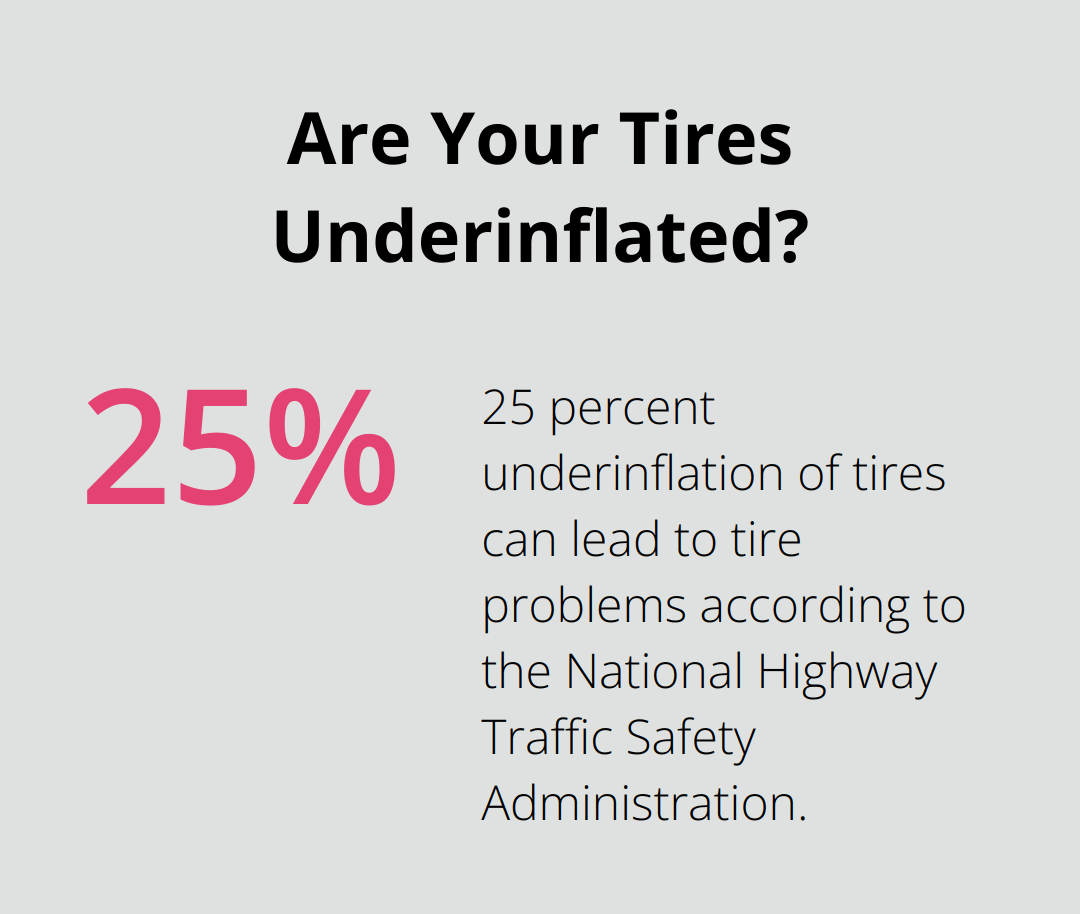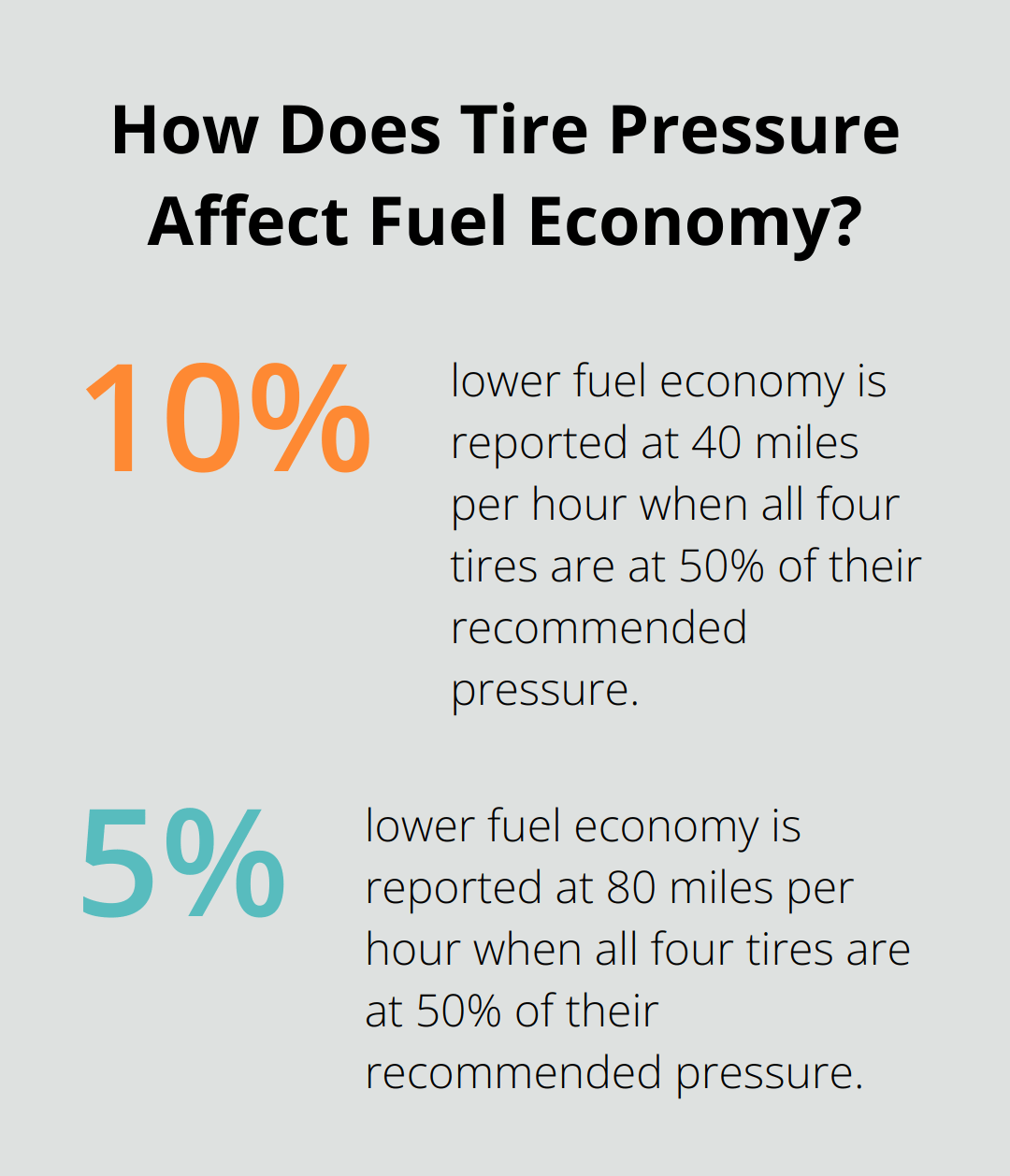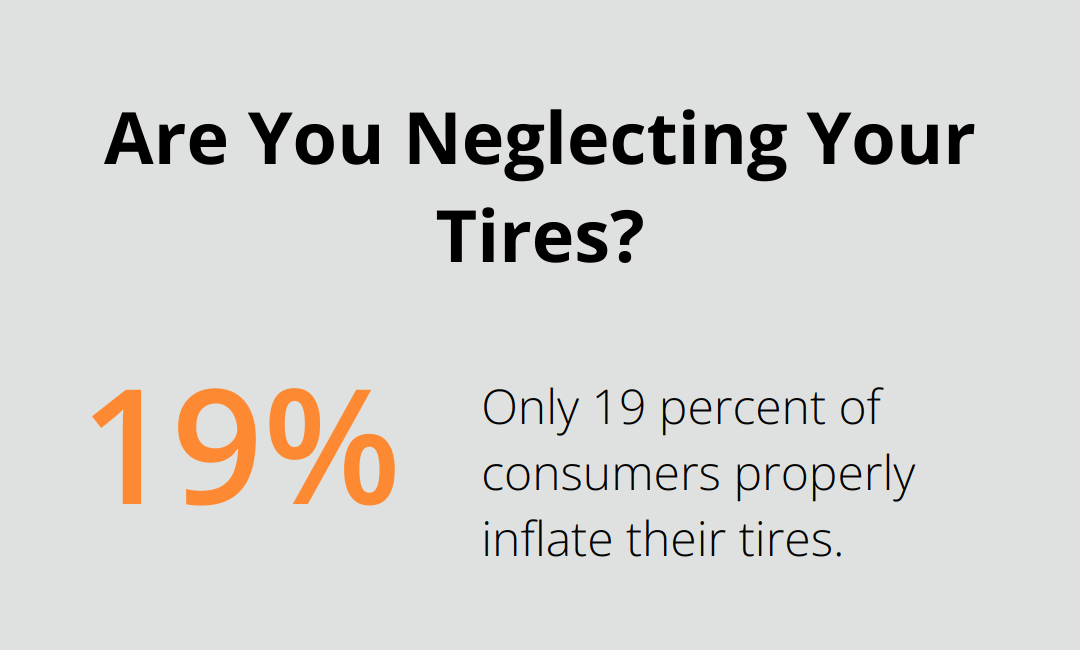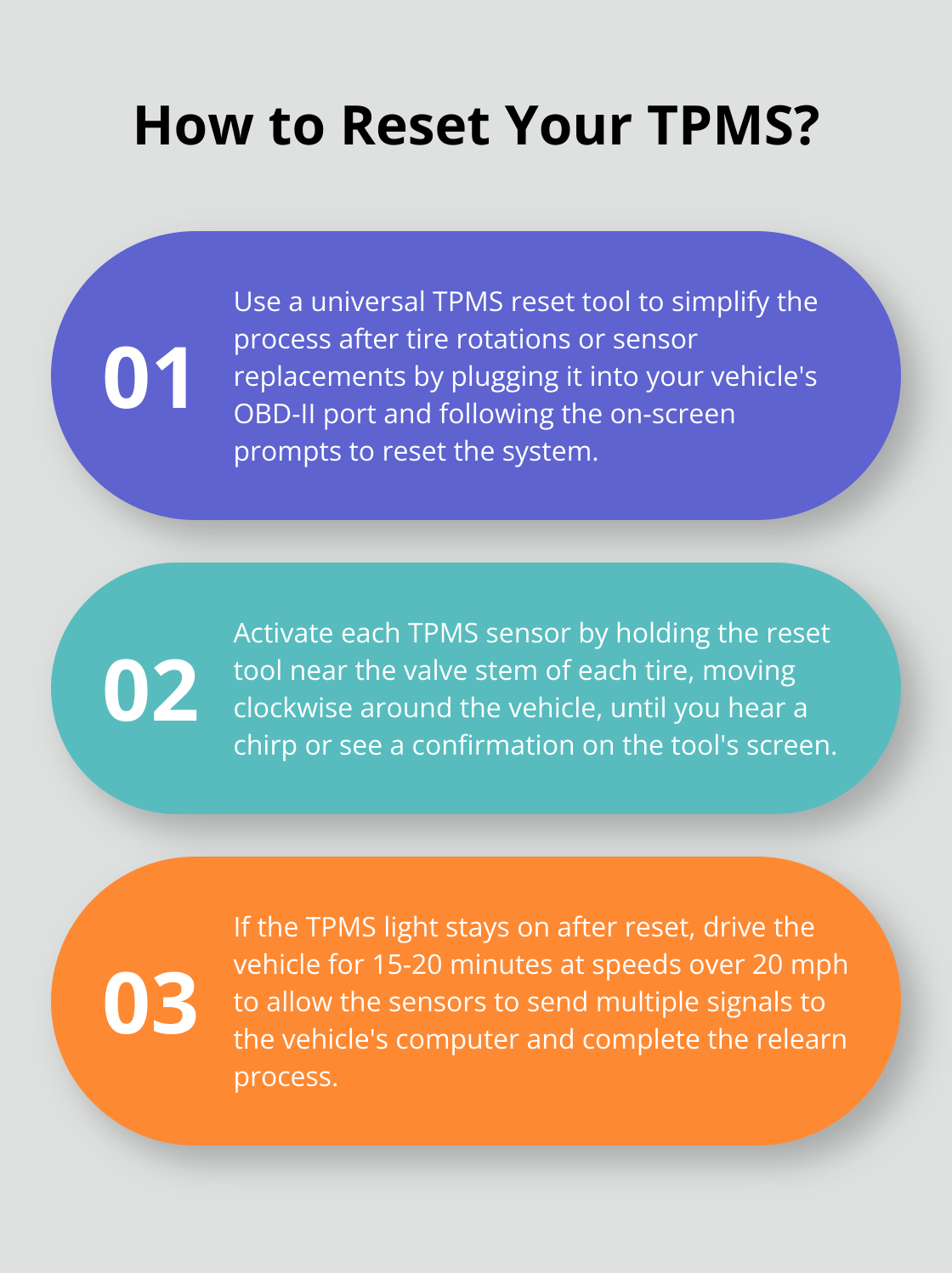A Universal TPMS Reset Tool is a game-changer for car owners and mechanics. This handy device simplifies resetting your TPMS after tire rotations, sensor replacements, or routine maintenance.
At Dallian Auto Accessories, we know how important it is to keep your vehicle’s tire pressure monitoring system (TPMS) in top shape. In this guide, we’ll walk you through the steps of using a universal TPMS reset tool, helping you maintain your vehicle’s safety and performance.
TPMS (Tire Pressure Monitoring System) is a safety feature that monitors your vehicle’s tire pressure. It alerts you when at least one or more tires are significantly under-inflated, which can prevent dangerous situations on the road.

The National Highway Traffic Safety Administration has found that vehicles with tires underinflated by more than 25 percent of the recommended pressure experienced tire problems. This finding highlights the importance of TPMS, which has been mandatory in all new vehicles in the United States since 2008.
TPMS resets are necessary after certain vehicle maintenance activities. For example, when you rotate your tires, the system must relearn which sensor is in which wheel position. Without a reset, you might receive inaccurate warnings about your tire pressure.
Several types of TPMS reset tools exist in the market:
For instance, some tools can diagnose TPMS issues, activate all known sensors, and provide real-time pressure and temperature readings.
When you choose a TPMS reset tool, consider your vehicle’s make and model. Some tools are designed for specific brands, while others (such as universal TPMS reset tools) work with various vehicles. Always check the compatibility before you make a purchase.
Some auto accessory providers offer TPMS reset tools as part of larger kits. For example, Dallian Auto Accessories includes a TPMS reset tool in their comprehensive auto repair tool kits, which provides a comprehensive solution for DIY car enthusiasts.
Now that we understand what TPMS is and why resets are essential, let’s move on to the step-by-step guide on how to use a universal TPMS reset tool.
Before starting, you must know which TPMS your vehicle uses. The two main types are direct and indirect. Direct TPMS uses sensors inside each tire, while indirect TPMS relies on the ABS to monitor the wheel’s speed. Check your vehicle’s manual or ask a professional if you’re unsure.
Start by inflating all your tires to the manufacturer’s recommended pressure. This information is on a sticker inside the driver’s side door jamb. Use a reliable tire pressure gauge for accuracy. The U.S. Department of Energy reports that at 40 miles per hour, fuel economy with all four tires at 50% of their recommended pressure is about 10% lower, but at 80 miles per hour, it is only about 5% lower.
Turn on your vehicle’s ignition without starting the engine. Plug the universal TPMS reset tool into your vehicle’s OBD-II port (usually located under the dashboard on the driver’s side). Follow the on-screen prompts on your reset tool to start the reset process. This typically involves selecting your vehicle’s make, model, and year.
After connecting the tool, you need to activate each TPMS sensor. Start with the left front tire and move around the vehicle clockwise. Hold the tool near the valve stem of each tire until you hear a chirp or see a confirmation on the tool’s screen. This process tells the vehicle’s computer system where each sensor is located.
After activating all sensors, the tool usually prompts you to save the new information. Once saved, unplug the tool and start your engine. The TPMS light on your dashboard should turn off within a few minutes of driving, indicating a successful reset.

While universal TPMS reset tools work with most vehicles, some high-end or newer models might require specific tools. If you encounter any issues, don’t hesitate to consult a professional.
Regular TPMS resets, especially after tire rotations or replacements, are key to keeping your vehicle in top condition. Now that you know how to reset your TPMS, let’s look at some common issues you might encounter and how to troubleshoot them.
When your reset tool doesn’t communicate with your vehicle, check the OBD-II port connection first. Make sure it’s firmly plugged in and free from debris. A weak vehicle battery can also cause communication issues. If your battery is over three years old, test its voltage or replace it.

Outdated tool software can be another culprit. Modern TPMS reset tools need periodic updates to maintain compatibility with newer vehicle models. Check the manufacturer’s website for the latest firmware and update your tool if necessary.
Incomplete resets often occur when the process is interrupted. This can happen if you turn off the ignition or disconnect the tool too early. To prevent this, park your vehicle safely with the parking brake engaged before you start the reset process.
If problems persist, clear the vehicle’s error codes before resetting. You can do this using the TPMS tool or a separate OBD-II scanner. Using a “cool” calibration procedure to initialize the TPMS before performing a low-pressure detection test can help keep the tires relatively cool, which may improve the reset process.
Don’t worry immediately if the TPMS light stays on after a reset. The system sometimes needs time to recalibrate. Drive the vehicle for about 15-20 minutes at speeds over 20 mph. This allows the sensors to send multiple signals to the vehicle’s computer, which completes the relearning process.
If the light stays on, check each tire’s pressure manually. Underinflation remains the most common cause of TPMS warnings. Only 19 percent of consumers properly inflate their tires, meaning four out of five consumers are wasting money due to underinflated tires.
While universal TPMS reset tools work with many vehicles, compatibility issues can arise (especially with newer or high-end models). Consider a more specialized tool if you consistently have trouble with a particular car.
Some European luxury brands use a different TPMS frequency (433 MHz) compared to the standard 315 MHz used by most American and Asian manufacturers. In these cases, you might need a dual-frequency tool.
If you’ve tried these solutions and still experience problems, consult a professional mechanic or your vehicle’s manufacturer for more specialized assistance. They can provide model-specific guidance and help resolve complex TPMS issues.
A properly functioning Tire Pressure Monitoring System alerts you to potential issues before they become dangerous. It saves you money and prevents accidents. The TPMS universal reset tool allows you to perform resets after tire rotations or replacements without visiting a mechanic.

You can quickly diagnose TPMS issues and keep your system up-to-date, which enhances your vehicle’s overall safety. The convenience of a universal tool means you can use it on multiple vehicles (making it a wise investment for any car owner or enthusiast). Regular TPMS checks and resets should become part of your vehicle maintenance routine.
We recommend you check out our range of automotive products to take your vehicle maintenance to a higher level. From diagnostic tools to comprehensive repair kits, we offer everything you need to keep your vehicle in top condition. With Dallian Auto Accessories, you can improve your driving experience while maintaining your vehicle’s safety and performance.
Leave a comment